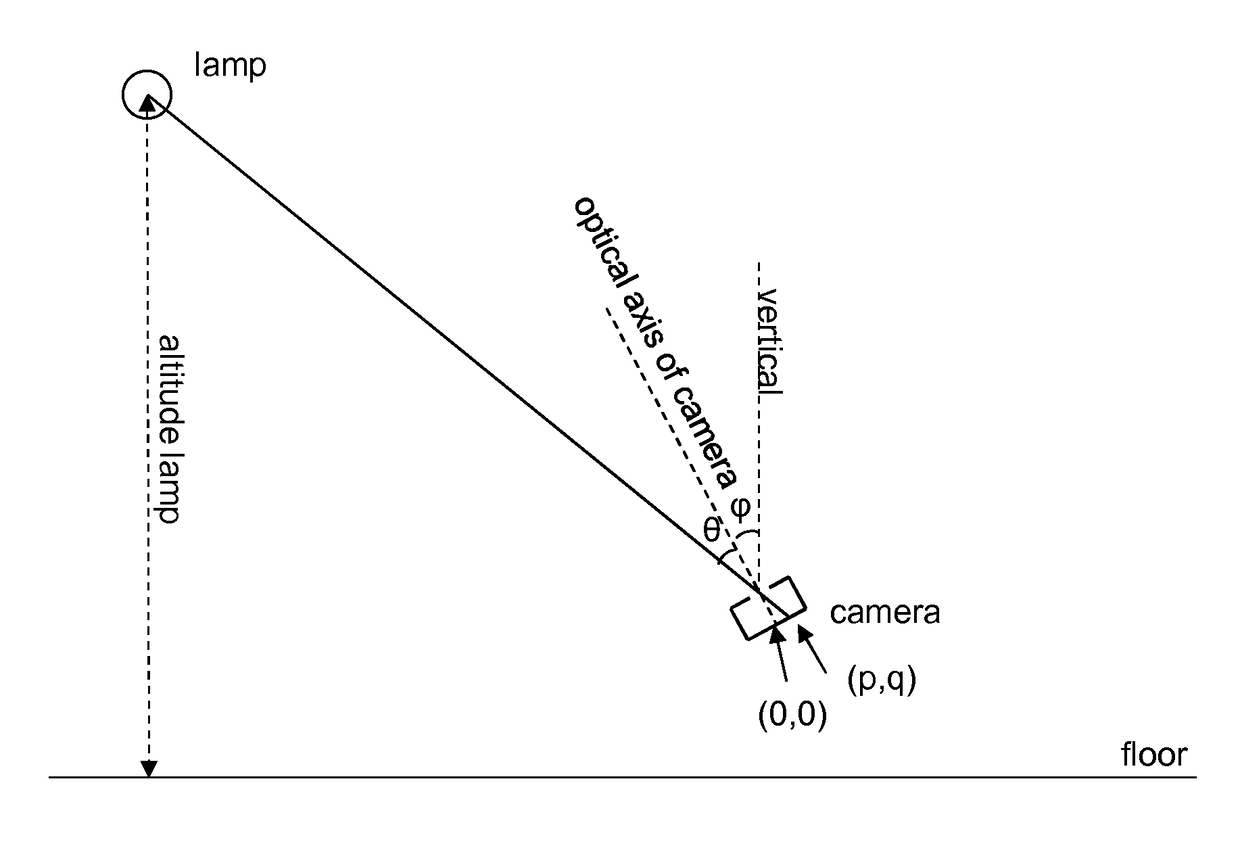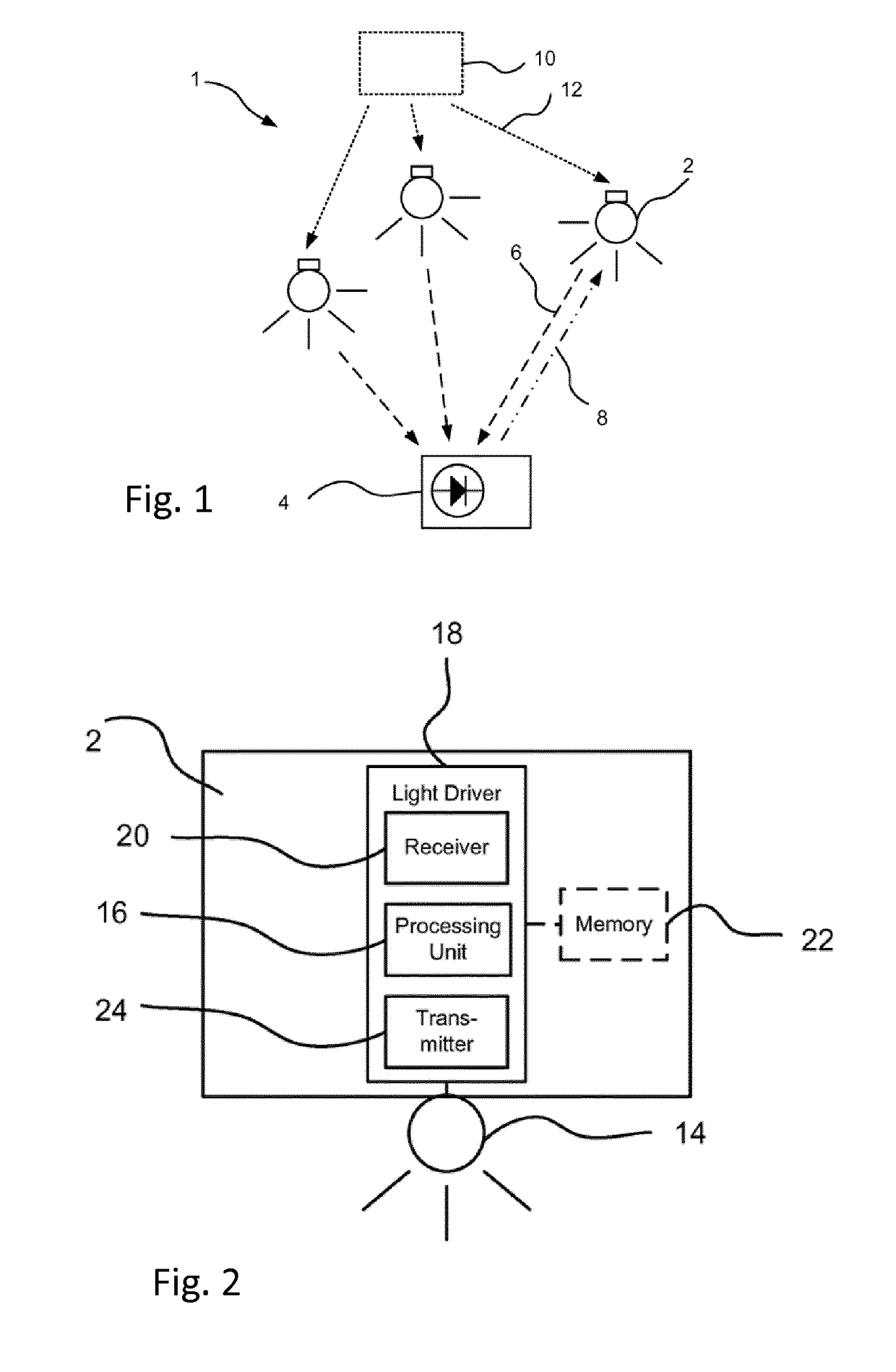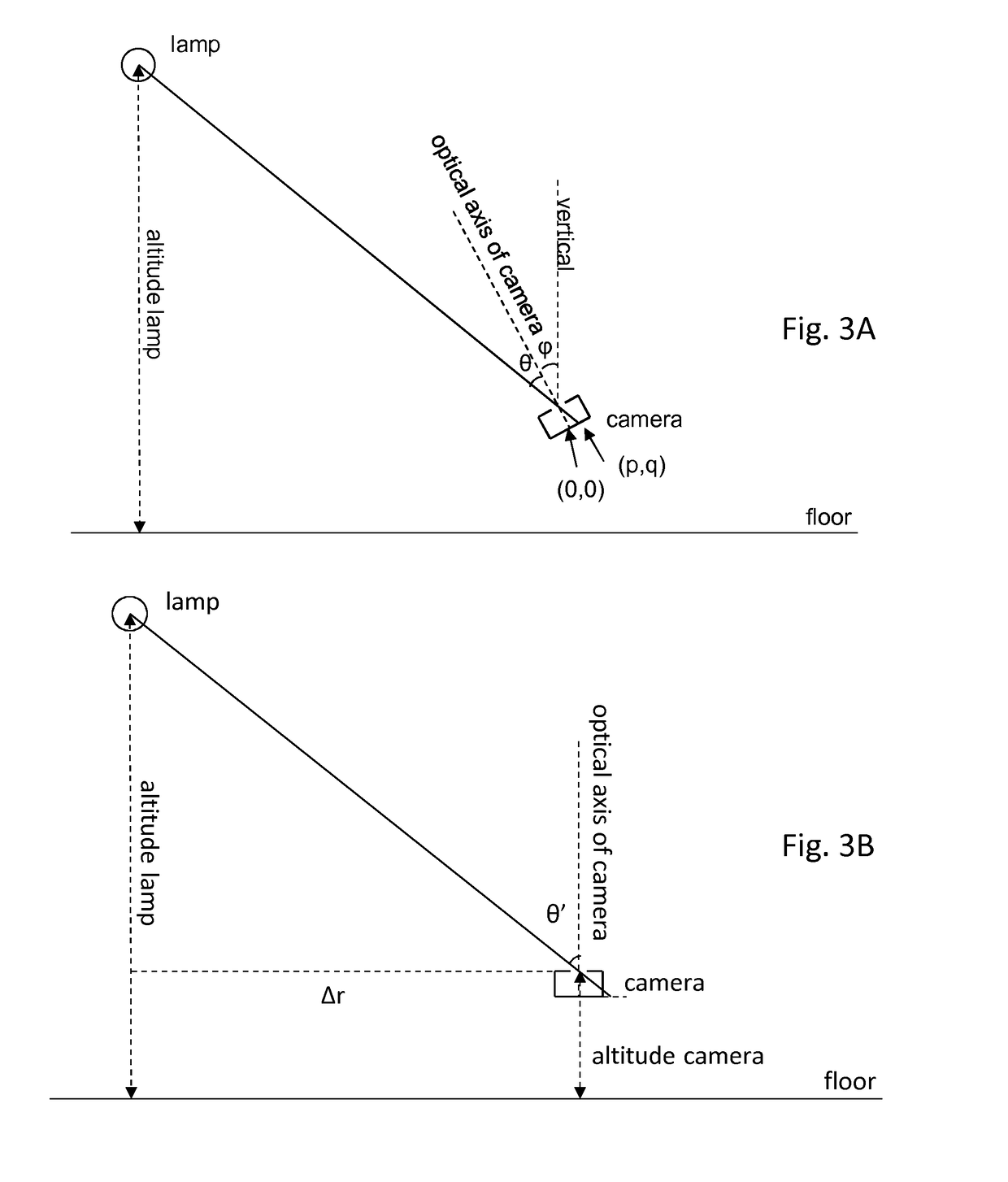Locating a portable device based on coded light
a portable device and coded light technology, applied in the field of location systems, can solve the problems of “clearly visible edges and system performance problems, and achieve the effect of accurate location and reduced cos
- Summary
- Abstract
- Description
- Claims
- Application Information
AI Technical Summary
Benefits of technology
Problems solved by technology
Method used
Image
Examples
Embodiment Construction
[0048]The present invention will now be described more fully hereinafter with reference to the accompanying drawings. The below embodiments are provided by way of example so as to convey the scope of the invention to those skilled in the art. Like numbers refer to like elements throughout.
[0049]Coded light systems as such are known. FIG. 1 illustrates a lighting system 1 comprising at least one light source, schematically denoted by the reference numeral 2. The at least one light source 2 may be a luminaire and / or be part of a lighting control system. Each light source 2 is capable of emitting coded light, as schematically illustrated by the arrow 6. Thus the lighting system 1 may be denoted as a coded light lighting system. A luminaire may comprise at least one light source 2. The term “light source” means a device that is used for providing light in a room, for purpose of illuminating objects in the room. A room is in this context typically an apartment room or an office room, a g...
PUM
 Login to View More
Login to View More Abstract
Description
Claims
Application Information
 Login to View More
Login to View More - R&D
- Intellectual Property
- Life Sciences
- Materials
- Tech Scout
- Unparalleled Data Quality
- Higher Quality Content
- 60% Fewer Hallucinations
Browse by: Latest US Patents, China's latest patents, Technical Efficacy Thesaurus, Application Domain, Technology Topic, Popular Technical Reports.
© 2025 PatSnap. All rights reserved.Legal|Privacy policy|Modern Slavery Act Transparency Statement|Sitemap|About US| Contact US: help@patsnap.com



